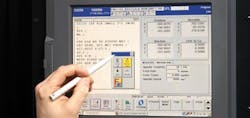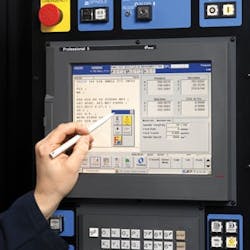Makino specializes in metal-cutting and manufacturing technology, with product lines including horizontal machining centers, vertical machining centers, wire electrical discharge machining (EDM), ram EDM, and graphite machining centers. Tsunezo Makino established the company in 1937. A joint project with General Electric in 1950 created the first continuous-path, numerically controlled (NC) lathe, a major step in the development of flexible manufacturing.
Makino is truly a global company, with 3,250 employees around the world. Headquarters are in Tokyo, but the machine builder has operations in a large number of other countries, including 12 regional tech centers in the Americas.
Makino developed a U.S. presence through the acquisition in 1981 of LeBlond Machine Tool, where it changed the name to LeBlond Makino Machine Tool and launched production there of Makino machine tools. Today, the company is known simply as Makino and has its U.S. headquarters in Mason, Ohio.
"We are structured with both local and global organizations that target specific application areas," Brown says. "These organizations are targeted at aerospace parts manufacturing, medical parts manufacturing, production parts manufacturing and die/mold parts manufacturing."
Figure 1: An a51nx horizontal machining center demonstrates its iron cutting capabilities with high-pressure through-spindle coolant.
Source: Makino
Each of the markets is considered key, Brown adds, but of course each has its own demands. "In recent years, the market that has pushed machine control technology the most is the aerospace market," he says. "For aerospace market requirements, Makino has developed and is currently developing technology that provides automatic correction of machine cutting parameters to assure good surface finish, cut accuracy, maximize metal removal rate, and provide improved cutting tool life."The a51nx (Figure 1) and a61nx horizontal machining centers were launched a couple years ago to bring these types of productivity, accuracy and reliability enhancements along with a larger work envelope. Brown points to the Makino a61nx-5E, with fully integrated five-axis capability, as one of the latest examples of control advances the company has made. "What is novel about this machine is the pallet changer," he says. "The pallet is attached in vertical orientation when in the machining area, but during pallet change the pallet is unclamped from the cutting zone and rotated to a horizontal position when it reaches the operator station. The horizontal presentation of the pallet is not only more convenient for manual operation, but allows for greater access for robotic load/unload. The machine control is equipped for both manual operation and fully automatic operation utilizing a robotic load/unload."
The development of the automatic correction technologies for machine cutting parameters has also driven incorporation of advanced machine control technology into the Makino Professional 5 control, Brown notes. Pro 5 is Makino's in-house control software that provides a user-friendly interface to its machines (Figure 2).
Makino recently applied its high-level automation control technology to standalone machines. "In these cases, the machine pallet changer is viewed as the pallet transportation vehicle," Brown says, explaining that the system automatically sends NC programs to the machine as needed, and reports tool life to the tool room so that tools can be made ready prior to replacement. "This has resulted in roughly a 30% increase in throughput over the former manual operation method. This kind of technology has long been applied to pallet automation systems, but is now seen as advantageous for standalone machines in certain configurations."
Figure 2: Professional 5 control provides a user-friendly GUI and touchscreen.
Source: Makino
Machines have seen significant control technology advances over the past 10 years, Brown notes. "In recent years, the processor power in controls and motor technology have dramatically improved, allowing much tighter path control and higher accelerations/decelerations, all providing the power to add graphical user interfaces for easier use," he says. "There have been many changes — from the use of distributed I/O technology to reduce cable size to the use of high-speed Ethernet to allow the machine control to be integrated into upper-level control and monitoring systems, as well as NC program management systems. The driver that I most often see is the customer's desire to view the machine tool control as a data management and data collection device in an Ethernet network architecture."All of Makino's milling and EDM machine controls are Ethernet-enabled, Brown says, and communications with an upper-level control and data collection system are also available. In the future, Brown would like to see greater ability to integrate into its customers' network environments and provide more processing power on the control. "To achieve this, the CNC control system must be capable of providing more data to the graphical user interface system and Ethernet interface," he says. "This will allow further development of control features to maximize cutting tool life, as well as provide advanced methods for controlling the machine's reaction to changing cutting conditions."
About the Author
Aaron Hand
Aaron Hand

Leaders relevant to this article:



